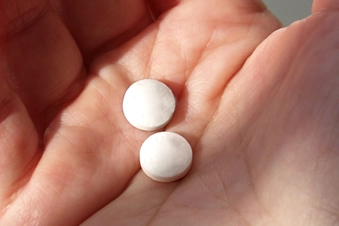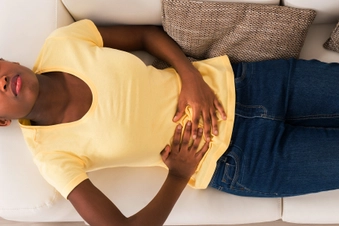Build Your Migraine Response Kit

At a Moment’s Notice
Migraines can come on without warning -- at home, at work, at school, at the mall, you name it. So it’s a good idea to have your pain medicine and other aids nearby so you can take action at the first sign of a headache. The answer is an emergency kit you can keep in your backpack, tote bag, or car.

Pain Medicine
When a headache starts, the quicker you take your meds, the more they can help you. If you tend to get an aura (such as changes in your vision or tingling in your hands or face) before the pain starts, take your medicine as directed as soon as you notice it.

Water
You have several reasons to keep water handy. If you get dehydrated, that can trigger a migraine. With water in your kit, you can drink up anytime you feel thirsty to ward that off. If a migraine does hit, drinks of water may help relieve it. You also might need water to wash down your pills or to wet a cloth to put on your forehead.

Caffeine
This may help ease the pain and give your painkillers a boost. Keep instant coffee or a bottle of tea in your emergency kit so you don’t have to search for a coffee shop while you’re having a migraine. If hot tea soothes you, toss in a tea bag or two. But be careful. Too much caffeine on a regular basis can lead to “rebound headaches.” If you have migraines often, your doctor may tell you not to have caffeine at all.

Cold or Warm Packs
For many people who get migraines, a cold compress on the forehead helps ease the pain. You can buy cold packs that cool down as soon as you squeeze them. They’re a lot handier than ice packs that have to sit in the freezer. You should also stock warm packs or a heating pad. You can hold them against tense muscles to soothe them.

Sunglasses and Earplugs
A dark room usually helps during a migraine, but if a headache hits while you’re out and about, that might be hard to find. In that case, sunglasses can help. Get the darkest ones you can find. They’ll tone down the light while you sit down or stretch out. They’re also handy if you’re around bright flashing lights, since those can sometimes trigger headaches. And if you can’t get to a quiet place, earplugs help block noise.

Anti-Nausea Medicine
Migraines give some people nausea as along with the headache, so keep medicine to prevent an upset stomach handy. You won’t have to handle stomach issues along with your headache.

Airsickness Bags
If your anti-nausea medicine doesn’t kick in fast enough and you get sick, you’ll want to be ready. Drugstores and websites sell these under other names as well, like vomit bags and emesis bags.

Gadgets to Help You Relax
Biofeedback is a system that teaches you to let go of tension with the help of sensors that tell you what’s going on in your body. Wearable devices let you do it wherever you are. And if you’re trying to relax, calm music can help. A music player and headphones can go with you anywhere.

Migraine Diary
When a migraine hits, your first urge won’t be to jot down notes. But once you get your headache under control, write down when the pain began and anything that might have triggered it. That can help you and your doctor figure out what you should and shouldn’t do. You don’t have to carry an actual book: Smartphone apps can do the job, too.

Natural Remedies
Researchers have found that some essential oils may help fight the pain from migraines, including lavender, peppermint, and chamomile. Dab some on your temples or forehead to help you relax. Another natural option for your kit might be tablets of powdered ginger. Some research suggests that ginger may help stop an oncoming migraine just as well as some prescription medications.

Neuromodulation
This refers to devices that send magnetic waves or electric currents to your nervous system. There are several types, but one common one is external trigeminal nerve stimulation (Cefaly). You put it on your forehead with a sort of headband, and it sends pulses to a nerve that plays a role in migraines. It’s lightweight, so it can travel with you. The device has the FDA’s approval, but you’ll need a doctor’s prescription to get one.

Emergency Card
Sometimes a migraine is so bad that other people have to help you. To help them, make a card that has the information they’ll need. Include info about your meds and contact information for your doctor. Add contact info for relatives or close friends in case you need someone to come get you.

At Work or School
If you feel like you have enough stuff to lug to around already, keep a mini-kit stocked with key aids in your desk or locker. That might include your medicine, an ice pack for your forehead, and a bottle of water. While you’re at it, tip off your boss or teachers about your migraines so they can be ready to help.
Show Sources
IMAGES PROVIDED BY:
1) iStock/Getty Images
2) iStock/Getty Images
3) iStock/Getty Images
4) iStock/Getty Images
5) Am??lie Benoist / Science Source
6) iStock/Getty Images
7) iStock/Getty Images
8) iStock/Getty Images
9) iStock/Getty Images
10) iStock/Getty Images
11)iStock/Getty Images
12) Science Source
13) iStock/Getty Images
14) iStock/Getty Images
SOURCES:
American Academy of Family Physicians: “Migraines.”
Mayo Clinic: “Biofeedback,” “Migraine with aura,” “Migraines: Simple steps to head off the pain.”
Migraine Action: “What to Pack for Your Emergency Kit.”
American Migraine Foundation: “Caffeine and Migraine,” “Cefaly for Migraine Prevention,” “Holistic Treatments for Migraine,” “The Timeline of a Migraine Attack,” “What to Do When a Migraine Comes Out of Nowhere and You Are at Work.”
The Migraine Trust: “Advice for teens.”
